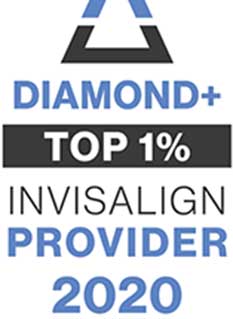
Some of the many advantages to using Invisalign:
SOCIAL - clear aligners are easily removed for those important social and business occasions.
ORAL HYGIENE - brushing and flossing become easy tasks.
COMFORT - the aligners do not irritate the soft tissue as they are made of a soft, flexible material.
DISCRETION - the clear aligners are practically invisible which allows for privacy and discretion during treatment.
TEETH GRINDING PROTECTION
EATING FOOD - you can still bite into an apple or eat a slice of pizza as the aligners are removed to eat, unlike metal braces!!
How Invisalign Works
Invisalign clear aligners work the same way traditional braces do: by applying carefully controlled forces to teeth to move them into a better position. But they are not made of metal; instead, they are made of clear, flexible plastic.
Here's how it works: Specialized computer software helps us design a plan for moving your teeth from their current positions into the best possible alignment. This movement will be broken down into perhaps several dozen stages. For each stage, the Invisalign company will manufacture two plastic mouth "trays" or "aligners," one to fit over your top teeth and one for the bottom. You will wear this first set of trays for one to two weeks, depending on your instructions, for a minimum of 20 hours per day. You will then move on to the next set of aligners in your series to accomplish the next stage of gradual movement. You will keep doing this until your teeth are correctly aligned.
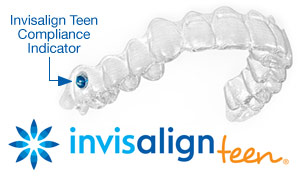 In the past several years, two features have been added to make Invisalign a more appropriate orthodontic treatment method for teenagers. Special "eruption tabs" hold the appropriate amount of space open for molars that have not fully grown in. Invisalign for teens also comes with "compliance indicators" built into the aligner material, which fade with wear. This allows parents, dentists, and the teens themselves, to make sure the trays are being worn as prescribed. Treatment with Invisalign can only be successful if this is the case.
In the past several years, two features have been added to make Invisalign a more appropriate orthodontic treatment method for teenagers. Special "eruption tabs" hold the appropriate amount of space open for molars that have not fully grown in. Invisalign for teens also comes with "compliance indicators" built into the aligner material, which fade with wear. This allows parents, dentists, and the teens themselves, to make sure the trays are being worn as prescribed. Treatment with Invisalign can only be successful if this is the case.
Caring for Your Teeth During Invisalign Treatment

As mentioned above, one of the main advantages of the Invisalign system is that the trays can be removed for easy cleaning. So please don't neglect to do this! You'll need to brush your teeth after every meal or snack so that food and plaque do not get trapped in the aligners, which could promote tooth decay and gum disease. Your aligners, too, will have to be cleaned regularly; you can do this by brushing them and then rinsing them with lukewarm water.
Also, please keep in mind that while wearing clear aligners is very different from wearing braces, the importance of retaining your post-treatment results is exactly the same. You'll want to be sure to wear your retainer(s) exactly as prescribed after your treatment is completed to protect your investment in a beautiful new smile.
Related Articles
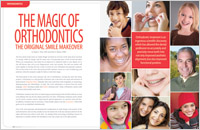
The Magic of Orthodontics Proper alignment of the teeth is basic to "Smile Design." Their position dictates how they work together and affects the way you look and smile. Only orthodontic treatment can move teeth into the right position. Simply put, when things look right, they probably are right. Learn the basics of smile analysis and design and whether the magic of orthodontics will work for you... Read Article

Clear Aligners for Teenagers Teens who regard traditional braces as restrictive, confining, and obstructive to their lifestyles now have another choice for orthodontic treatment: clear aligners. This advanced dental technology, originally geared toward adults, has recently evolved to treat a greater variety of bite problems in younger people. These improved orthodontic appliances can help teens function normally during a difficult phase of life... Read Article
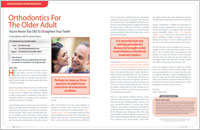
Orthodontics for the Older Adult Healthy teeth can be moved at any age, so there's no such thing as "too old" for braces. In fact, nowadays about one out of every five orthodontic patients is an adult. Yet this figure represents only a small portion of adults who could actually benefit from orthodontic treatment... Read Article
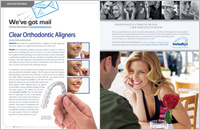
Clear Orthodontic Aligners Orthodontic treatment using clear Invisalign aligners consists of a series of aligners that you change about every two weeks over a course of treatment lasting six to eighteen months depending on how much movement is needed... Read Article

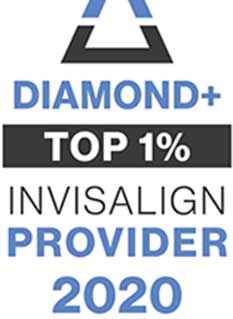 There's a new technology that's (literally) putting a smile on plenty of young faces: A system of clear, removable aligners made especially for teens called Invisalign Teen®! If you (or a teenager you know) are a candidate for this treatment, you might find it's the best fit for your lifestyle: It lets you eat what you want, makes it easier to clean your teeth — and best of all, it's virtually invisible.
There's a new technology that's (literally) putting a smile on plenty of young faces: A system of clear, removable aligners made especially for teens called Invisalign Teen®! If you (or a teenager you know) are a candidate for this treatment, you might find it's the best fit for your lifestyle: It lets you eat what you want, makes it easier to clean your teeth — and best of all, it's virtually invisible.
Is a clear aligner right for you? It all depends on what kind of orthodontic treatment you need. Traditional metal braces still work best in some situations — and you might be surprised to find that they're still a popular option for many teenagers! But now that aligners are being designed specifically for teens, more are choosing them every day.
What is a clear Invisalign aligner? Basically, it's a thin plastic covering or "tray" that fits over your top and/or bottom teeth. You'll wear a series of aligners that will gradually move your teeth into better positions. Here's how they work: Each aligner is custom-made with the help of a computer program that takes into account exactly where your teeth are now, and how they need to be moved. You'll wear each tray for two weeks or so, to shift your teeth slightly, and then you'll go on to the next, which is slightly different. Over time, all of the small movements will add up to a big change!
A Clear Distinction
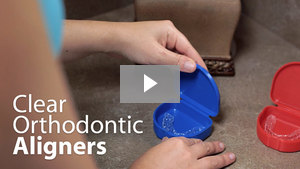
Your aligner is designed to be worn 22 hours a day, allowing you to take it off for meals or important social occasions. Yet even when you're wearing it, it's pretty hard for anyone else to tell it's there — a big difference from metal braces! Plus, it offers other advantages that aren't so easy to see.
Benefits of aligners over braces:
Teeth are much easier to keep clean
Minimal irritation to gums and cheeks
No broken wires or brackets
No need to avoid foods that can break metal braces
Some people also suffer irritation to the cheeks and gums from the metal parts of braces. Fortunately, the plastic of an aligner rarely causes that kind of problem. Plus, you won't have to rush into the dental office to quickly fix a protruding wire or reattach a broken bracket. You won't have to watch what you eat, either, because you'll simply remove the aligner at mealtimes.
An Aligner Just for Teens
Clear aligners for adults have been available for over a decade, but until recently they weren't recommended for teens in most cases. Why not? Chiefly, for two reasons: It was thought that teens wouldn't always wear them for the recommended 22 hours per day; also, since many teens have some permanent teeth still erupting (emerging from below the gums), the precisely planned movement of the teeth might be disturbed.
 Luckily, technology has come to the rescue. The first problem is addressed by "compliance indicators" located on the aligners themselves. These colored dots fade over time as the aligners are worn in the mouth, showing whether or not you've followed the plan. To solve the second problem, aligners made especially for teens come with "eruption tabs" built in; they are designed to hold space for teeth that have not yet fully erupted.
Luckily, technology has come to the rescue. The first problem is addressed by "compliance indicators" located on the aligners themselves. These colored dots fade over time as the aligners are worn in the mouth, showing whether or not you've followed the plan. To solve the second problem, aligners made especially for teens come with "eruption tabs" built in; they are designed to hold space for teeth that have not yet fully erupted.
Today, more people than ever — both adults and teens — are finding that clear Invisalign aligners suit their needs best. Are you one of them? Why not come in to our office and ask whether clear aligners could work for you.
Related Articles

Clear Aligners for Teenagers Teens who regard traditional braces as restrictive, confining, and obstructive to their lifestyles now have another choice for orthodontic treatment: clear aligners. This advanced dental technology, originally geared toward adults, has recently evolved to treat a greater variety of bite problems in younger people. These improved orthodontic appliances can help teens function normally during a difficult phase of life... Read Article
